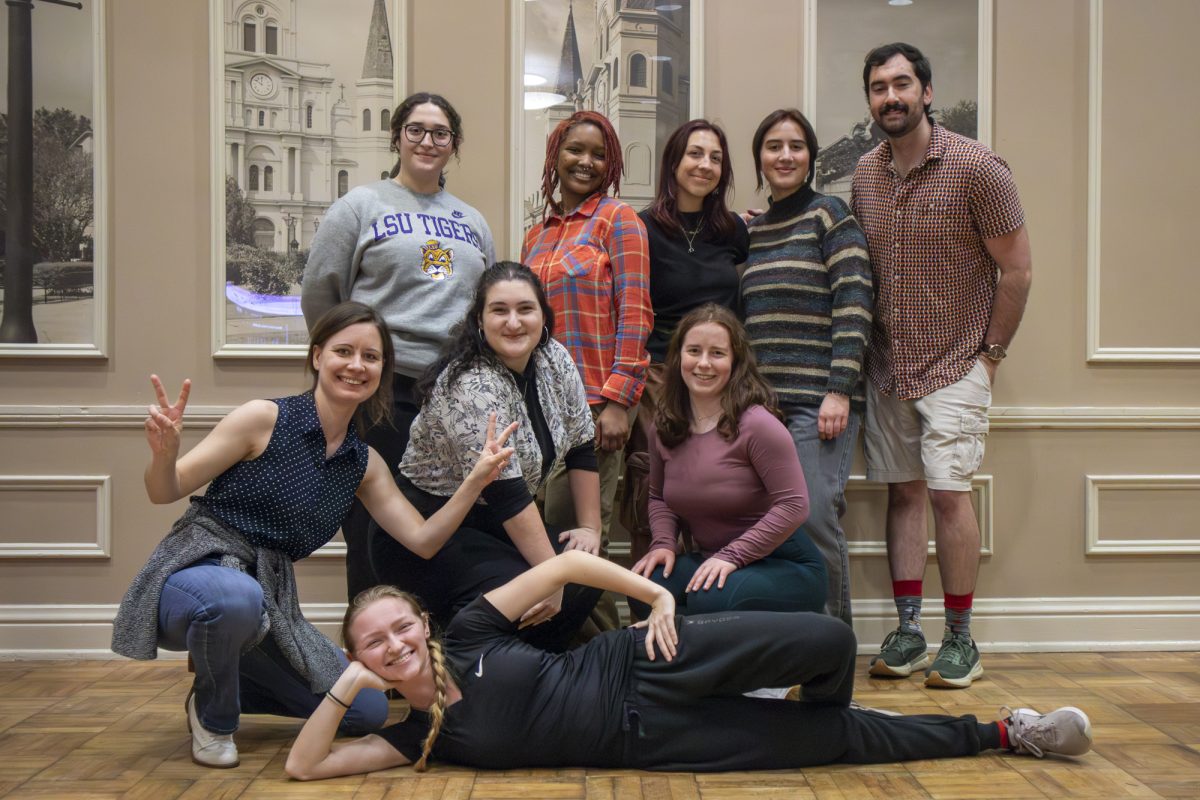At 78 years old, New Orleans artist Mignon Faget is still hard at work — and she has no intention of stopping.
The artist best known for her intricate jewelry designs is showcasing pieces from her 41-year career at the Louisiana State Museum – Baton Rouge in her exhibit, “Mignon Faget: A Life in Art and Design,” until Feb. 25.
The exhibit highlights the diversity of Faget’s pieces. Her art is whimsical and simple. It’s simultaneously complex and meaningful.
Faget bases her designs on everything from plain knots and ribbons to sea shells and Louisiana icons like red beans and a red stick to represent the state’s capital.
Faget recently introduced two new collections — Hive and Louisiana Bicentennial. Hive was inspired by a beehive, and the bicentennial collection comprises pieces depicting the Pelican State and state seal.
She describes her work as “interpreting nature into precious metals.”
At LSM’s opening reception for her exhibit Thursday evening, Faget said she plans to work forever.
Faget, attired in a silk shirt, beige pants and nude flats and accessorized with her own artwork, blushed as she was awarded a proclamation from Lt. Gov. Jay Dardenne recognizing her for her contributions to the cultural enrichment of Louisiana.
Upon receiving the praise, Faget humbly said, “What a glowing description. Is that really me? I just pick and choose things we see around us everyday. I want to make my art an active part of a person’s life.”
The iconic artist said she owes her success to good friends and a beautiful place to live.
The exhibit displays pieces from Faget’s beginnings as a costume designer to her most recent jewelry collections. Her works are arranged by collection and are accompanied by short stories, descriptions and patterns and sketches.
For example, the display of Faget’s Hive line is accompanied by a fragment of the actual beehive that inspired her designs.
Most of Faget’s clothing pieces include ’60s-era dresses adorned with sashes, vests and studs. She printed designs on her pieces with patterns carved into linoleum blocks.
On a wall behind her apparel designs hangs a spread from New Orleans Magazine picturing models in her designs — most notably an open-front body-length suede and nailhead vest — gallivanting with members of the rough Galloping Goose Motorcycle Club.
Coeli Hilferty, marketing and public relations coordinator for Mignon Faget, Ltd., said the magazine cover was thought to be improper and controversial.
“Mignon was ahead of her time,” Hilferty said.
Virginia Saussy, executive vice president of Mignon Faget, Ltd., said while studying at Tulane University, Faget tinkered with creating seashell charms out of metal. Saussy said while Faget produced her clothing items, people continually requested to buy her seashells.
This and her contempt for the fashion industry’s demand to roll out a new clothing line every season further urged Faget toward jewelry-making, Saussy said. The designer was attracted to the timelessness of jewelry.
A story lies behind every one of Faget’s works.
While pointing out Faget’s popular 1975 animal cracker collection, Saussy explained that the line was originally comprised of painted ceramic Nabisco-brand cookies.
The imitation Oreos and Lorna Doones were meant to be worn as belt buckles and barrettes. Saussy said Faget, proud of her work, sent a box of her cookie jewelry to the Nabisco corporate office.
Instead of receiving a thank-you note or an order for more ceramic cookies, Saussy said Faget received a cease and desist letter from Nabisco, which led her to abandon the Oreos and embrace animal crackers instead.
Her animal cracker line has grown throughout the years, and one dark piece stands out.
“She was a black sheep,” Saussy said, referencing the single animal cracker amulet.
The meaning of Faget’s work has evolved for many throughout the years. Saussy said the donkey and elephant animal crackers have grown to be representations of the Republican and Democratic parties, while her collection of adjustable nuts were originally symbols of feminism.
Faget engineered a small pulley system inside the pecan pendants of one of her necklaces that allows the wearer to adjust the length of the necklace.
Made during a time when it was only appropriate for women’s necklaces to graze their collarbones, Saussy said, “It was freedom of jewelry. She made it a feminist statement.”
University alumna Ashley Menou attended the exhibit’s opening and reminisced over her first and favorites of Faget’s collections.
“Everything she makes is so true to form,” she said. “I love her and her intricacy.”
Menou said she was impressed by the exhibit and it exceeded her expectations.
“It’s so neat how she’s such a Louisiana icon, and she’s just an hour and a half away,” she said.
_____
Contact Emily Herrington at [email protected]
Louisiana State Museum hosts exhibit showcasing life and work of Mignon Faget
November 21, 2011






